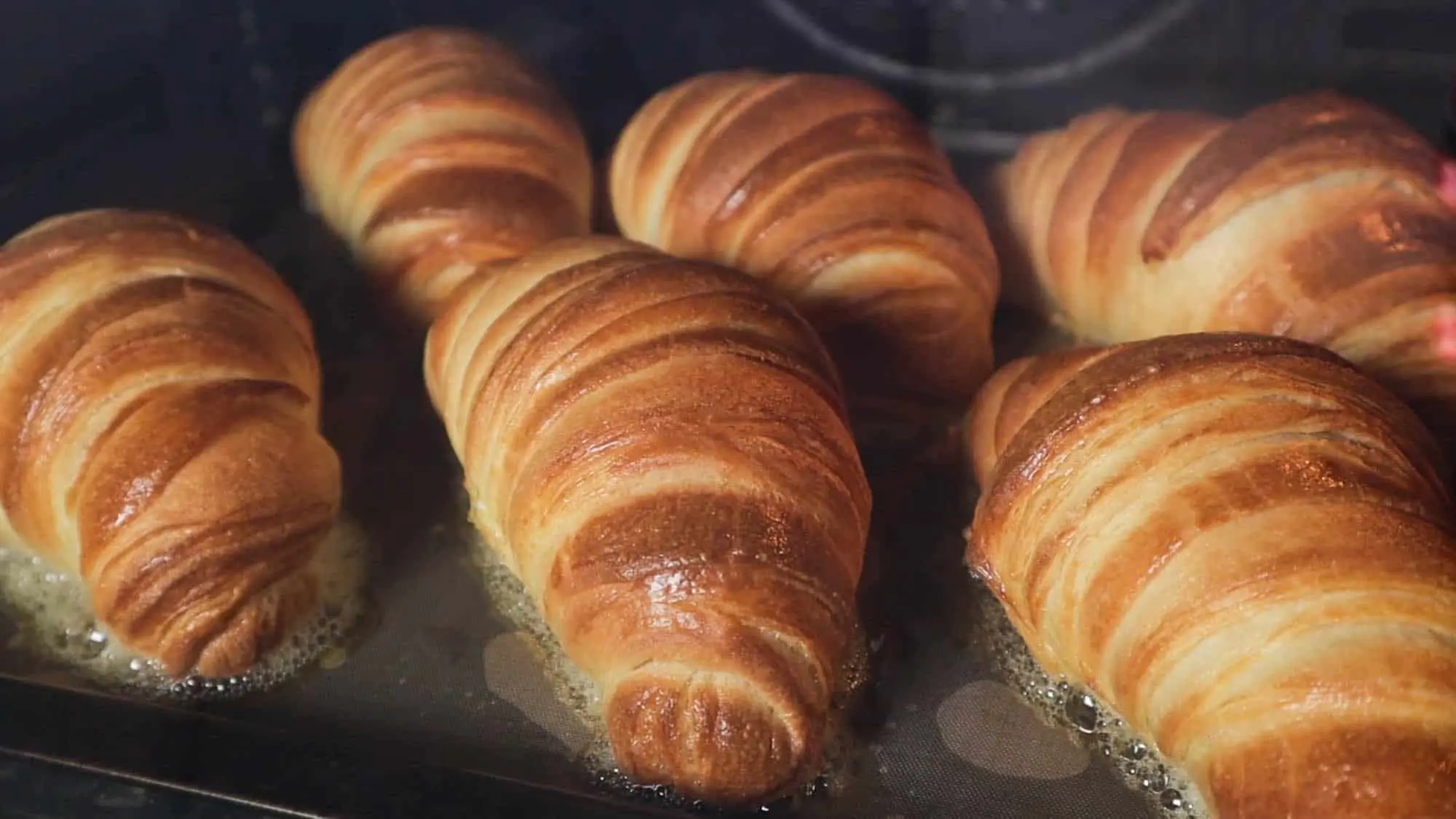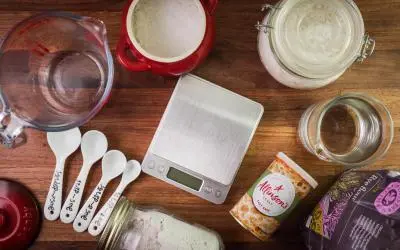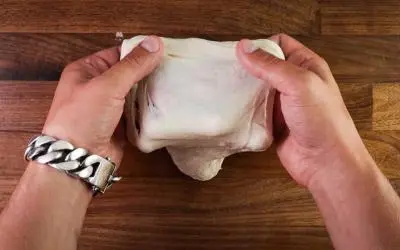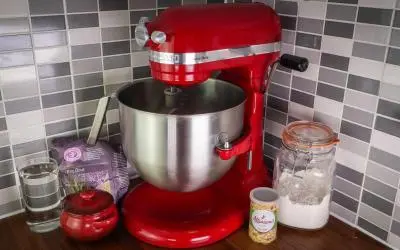Right after scoring comes baking. We have been working towards this step for a while and considerable effort has gone into every step before this.
This is the step I most look forward to (beside eating). The baking process is very much hands-off. The best you can do is make sure that the conditions in the oven are right before the bread goes in.
An oven should be preheated properly – at least an hour. The little red light on our home ovens that goes off indicating a certain temperature is deceptive. It shows oven air temperature which will heat up quite rapidly.
The oven walls and your baking pot or a stone would take considerably longer to reach that temperature. So never trust that little light!
Speaking of baking vessels – a good cast iron pot is the home baker’s best friend. To get a proper rise (oven spring) you need to bake bread on a solid hot surface. Of course, this is not always possible, but when you can, use a baking stone or a cast iron pot.
Besides a solid hot surface that the bread can jump up from it also needs steam. As you place your dough in the oven the heat instantly starts drying out the surface of the dough. While it is trying to rise the drying process will form a crust prematurely and stop the dough from expanding.
The easiest way of getting steam is by using a cast iron pot with a lid which will keep in the steam that is produced from the dough itself.
If you do not have a pot, then there are other options for steaming. Lava rocks are a good option. Preheat them in a tray at the bottom of your oven and pour a cup of water over them to create lots of steam. Be careful not to scald your hands!
A spray bottle with water may be a good option. Spray the surface of the bread before it goes in the oven and spritz the inside of the oven to create more steam.
Whichever method you use it is important to release the steam halfway through baking either by removing the lid of the pot or opening the oven to let the steam out otherwise a crispy crust will not form on the final bread.
Various shaped and sized loaves will take various cooking times. A long and thin baguette will bake in 20 minutes, a pizza might be ready in 5 – 8. A sourdough loaf might take 40.
A successful bake will be risen nicely, have a crispy crust and feel light in the hand. Tap the bottom of the loaf and it should sound kind of hollow. In a pinch, if you are unsure then stick a temperature in the thickest part of the loaf. It should read at least 94C (200F).
Watch the video here



